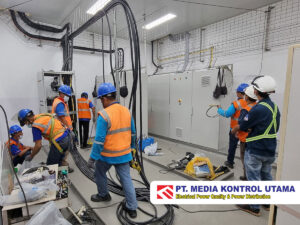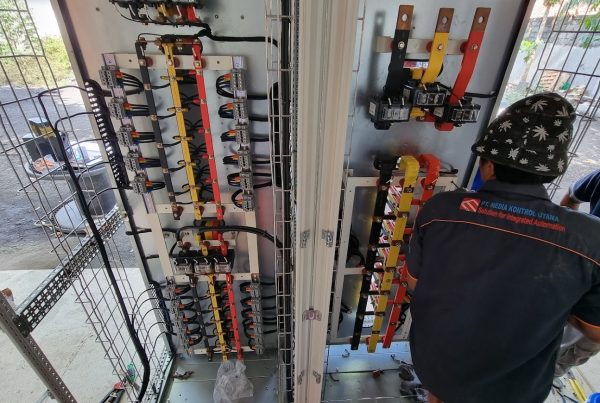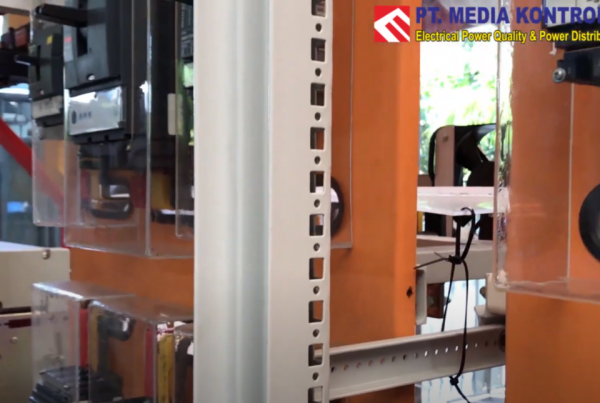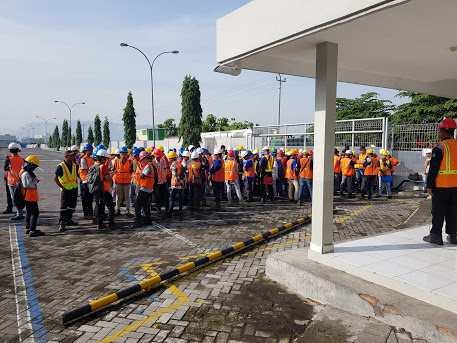LV Feeder (Low Voltage) cables play a crucial role in distributing electrical power from the main supply to various parts of a facility. Proper handling, installation, and termination of these cables are essential for ensuring electrical safety and system reliability.
This article (and the video below too) will explore the key steps involved in pulling, dressing, and terminating LV feeder cables.
1. Pulling LV Feeder Cables
Pulling LV feeder cables involves the physical process of routing the cables from the main supply to their designated locations. This step requires careful planning and execution to prevent damage and ensure proper installation.
- Preparation: Before pulling the cables, ensure the cable route is clear of obstacles. Verify that all necessary permits and safety procedures are in place.
- Cable Handling: Use appropriate tools and techniques to handle the cables. Avoid dragging or dropping them, as this can cause damage to the insulation.
- Cable Lubrication: If the route is long or has bends, applying cable lubricant can reduce friction and ease the pulling process.
- Pulling Equipment: Employ cable pullers or winches for longer runs. Ensure that the equipment is rated for the cable size and type.
2. Dressing LV Feeder Cables
Dressing cables involves organizing and securing them in their designated positions to maintain an orderly and accessible installation. Proper dressing prevents damage, reduces the risk of interference, and facilitates future maintenance.
- Cable Routing: Route cables along designated pathways, using cable trays, conduits, or other support structures as specified in the design.
- Securing Cables: Use cable ties, clamps, or hangers to secure the cables. Avoid over-tightening, as this can damage the cables.
- Bending Radius: Maintain the minimum bending radius recommended by the cable manufacturer to prevent stress on the cables.
- Identification: Clearly label cables at both ends to simplify troubleshooting and maintenance.
3. Terminating LV Feeder Cables
Terminating LV feeder cables involves connecting the cables to their respective terminals or connection points. This step is critical for ensuring reliable electrical connections and system performance.
- Preparation: Strip the insulation from the cable ends, exposing the conductors. Follow the manufacturer’s instructions for stripping length and method.
- Termination Types: Choose the appropriate termination method, such as crimping, soldering, or using terminal blocks, based on the cable type and application.
- Inspection: Inspect the terminated connections for proper alignment, secure fitting, and absence of damage. Ensure that all connections are tight and free from corrosion.
- Testing: Perform electrical tests to verify the integrity of the connections and the overall system functionality. This may include insulation resistance testing and continuity checks.

LV Feeder (Low Voltage) Project by PT Media Kontrol Utama
Conclusion
Properly pulling, dressing, and terminating LV feeder cables is essential for a safe and efficient electrical installation. By following these guidelines, you can ensure that your installation meets industry standards and performs reliably. Always adhere to safety protocols and manufacturer recommendations to achieve the best results.
Contact Us
For expert consultation and repair services for your LV System, reach out to PT Media Kontrol Utama. Our experienced professionals are ready to help you maintain the reliability and safety of your electrical distribution system.
References:
- National Electrical Code (NEC) 2023, National Fire Protection Association (NFPA), comprehensive standards and guidelines for electrical installations, including cable pulling, dressing, and termination, https://www.nfpa.org/codes-and-standards/nfpa-70-standard-development/70, accessed on 24th July 2024.
- Electrical Contractors Association (ECA), Cable Management Systems: A Guide to Proper Installation, https://www.eca.co.uk/, accessed on 24th July 2024.
- Wikipedia, Low-voltage network, https://en.wikipedia.org/wiki/Low-voltage_network, accessed on 24th July 2024.
- Youtube, Puling-Dressing -Terminasi Pada Panel-Panel SDB & MCC Intergrasi – PT Media Kontrol Utama, https://www.youtube.com/watch?v=NkFWr4l0g-k, accessed on 24th July 2024.



